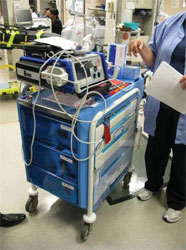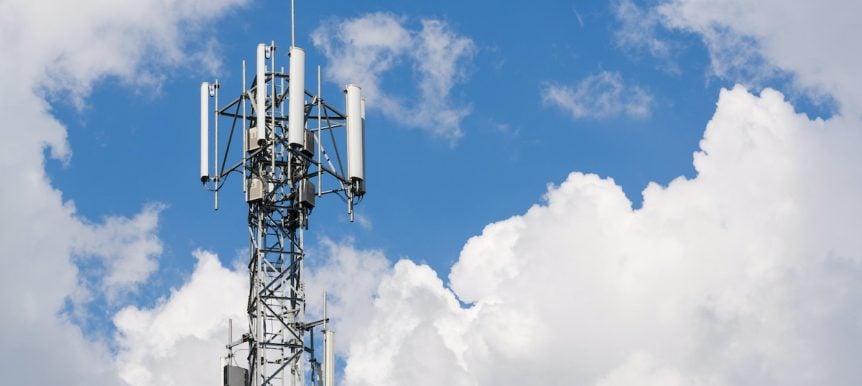New NYU center to study advanced wireless technologies in medicine

Source: http://mobihealthnews.com/
New York University is the latest institution to open a wireless health research center, though NYU is calling its effort the “first academic research center combining the exploration of advanced wireless technologies, computing and medical applications.”
NYU last week unveiled NYU WIRELESS, bringing together engineering, computer science and medical faculty and students from the main university, NYU-Tandon and NYU Langone Medical Center.
Founder and Director Ted Rappaport, who holds faculty appointments at NYU-Tandon, NYU School of Medicine and the university’s Courant Institute of Mathematical Science, promises that NYU Wireless will be “very different” from other academic wireless health research institutions, such the University of Southern California’s Center for Body Computing, the Harvard-affiliated Center for Connected Health at Partners HealthCare and the UCLA Wireless Health Institute. Notably, NYU Wireless will be looking less at remote patient monitoring than those centers – as well as the non-academic West Wireless Health Institute – and more at the engineering of wireless systems in hospital environments.
Rappaport, who earlier founded centers for studying wireless engineering at Virginia Tech and the University of Texas, had a hand in designing the first wireless pacemaker in the mid-1990s. At NYU, he wants to combine research in engineering and computer science and work with physicians to “bring wireless communications to its Renaissance, including in the medical field,” he tells MobiHealthNews.
“We’re trying to focus on research for medical researchers,” Rappaport says. “We want to bring computational algorithms to the cutting edge of medicine,” he adds.
“We’re finding that a lot of mathematics and circuitry in wireless engineering problems can be applied to medicine, such as in MRI, other types of imaging, real-time data transmissions and so forth,” according to Rappaport.
“NYU has a world-class radiology department and NYU-Tandon has excellent wireless engineering,” Rappaport continues. “We are going to try to make advancements in real-time MRI for moving parts of the body, such as the heart and lungs.”
With the help of some of its corporate sponsors, the center also will be looking at wireless data flow within hospitals. “We are motivated to make huge improvements in operating rooms for medical researchers” by looking at wireless signal processing, circuits, antennas and computational methods, Rappaport says.
National Instruments, a maker of engineering test equipment and software, is the center’s founding industrial sponsor. Other participating corporations by virtue of their association with projects predating NYU Wireless include wireless industry heavyweights Samsung, AT&T, Verizon and Cisco Systems. Expect to see other partners in the future. “We’re very collaborative, so we will always seek out opportunities to collaborate when it makes sense,” Rappaport says.
NYU Wireless is being set up in an NYU Tandon building in Brooklyn, a facility on track to open this winter. NYU is making three faculty positions available for the center and is spending $4 million to build out the 23,000-square-foot space. The university also is providing $3 million in start-up funding, according to Rappaport.
“It’s ramping up very quickly,” Rappaport says. More than 100 students and 25 faculty members already are working together on projects associated with NYU Wireless, and the faculty together have $10 million in annual research funding.
Rappaport says researchers affiliated with the center also are conducting measurements around New York City to determine how well millimeter-wave signals can carry data. In theory, shorter signals can provide the kinds of bandwidth that will be necessary later this decade. “When the wavelength is smaller, you can use smaller antennas with greater gain,” Rappaport explains.
The National Science Foundation and several companies have awarded NYU Wireless faculty a research grant of more than $2 million for the investigation of what Rappaport calls “fifth-generation cellular,” or 5G, which could be 1,000 times faster than 4G.
“By working with some of the world’s best doctors and surgeons, we can solve real problems in the medical field while bringing our industry sponsors in direct contact with engineering problems and market opportunities in healthcare,” Rappaport says in an NYU-Tandon press release. “And by moving up the spectrum, a new frontier opens to wireless innovation. The millimeter-wave spectrum is uncrowded – with enough capacity to accommodate breakthroughs in cellular and personal wireless communication networks.”

 Biden-Harris Administration Awards Wireless Innovation Fund Grant to Sundeep Rangan & Team
Biden-Harris Administration Awards Wireless Innovation Fund Grant to Sundeep Rangan & Team Governor Kathy Hochul calls on Professor JR Rizzo to Help Boost Accessibility for NYC Commuters
Governor Kathy Hochul calls on Professor JR Rizzo to Help Boost Accessibility for NYC Commuters With NSF and Industry Support, NYU WIRELESS Aims to Harness the THz Spectrum for Amazing Possibilities
With NSF and Industry Support, NYU WIRELESS Aims to Harness the THz Spectrum for Amazing Possibilities








